May 3, 2025
Letters from Indochina (Part 34)
By Simon J. Lau
Of the three countries that were once part of French Indochina, Laos is perhaps the least talked about, and historically, the least centralized. Before colonial rule, there wasn’t a unified Laotian state as we know it today. The region was a patchwork of small kingdoms. Over time, these kingdoms fractured, and much of the territory fell under the control of Thailand, serving as a vassal state for over a century.
That changed in 1893, when tensions between France and Thailand escalated into open conflict. After a brief but decisive military confrontation, France forced Thailand (previously known as Siam) to sign the Franco–Siamese Treaty, ceding all territory east of the Mekong River, including present-day Laos, to French control. From that point on, Laos was folded into French Indochina.
In the years that followed, France continued to push westward, gradually seizing additional territory from Thailand along the western bank of the Mekong. Unlike Vietnam or Cambodia, however, Laos was treated more as a buffer state than a colonial prize. The French invested little in its development and largely maintained it as a strategic frontier.
With the end of French colonialism in the mid-20th century, there was a brief window when the future of Laos was uncertain. Some in France, and even in Thailand, floated the idea of returning Lao territory to Thai control, especially given their historical ties. But geopolitics had shifted. France had no interest in strengthening Thailand, which had aligned itself with Japan during World War II. More importantly, France wanted to preserve some semblance of influence in the region, even as its empire was unraveling.
Rather than risk empowering a regional rival, France backed the creation of an independent Laos. It began as a constitutional monarchy under royal rule, but as political tensions grew, the country became a battleground between communist and Western-backed forces during the Cold War. In the end, the communists prevailed. And that’s how we ended up with modern-day Laos: not a return to Thai rule, but a newly drawn nation-state shaped as much by colonial strategy as by its own cultural roots.
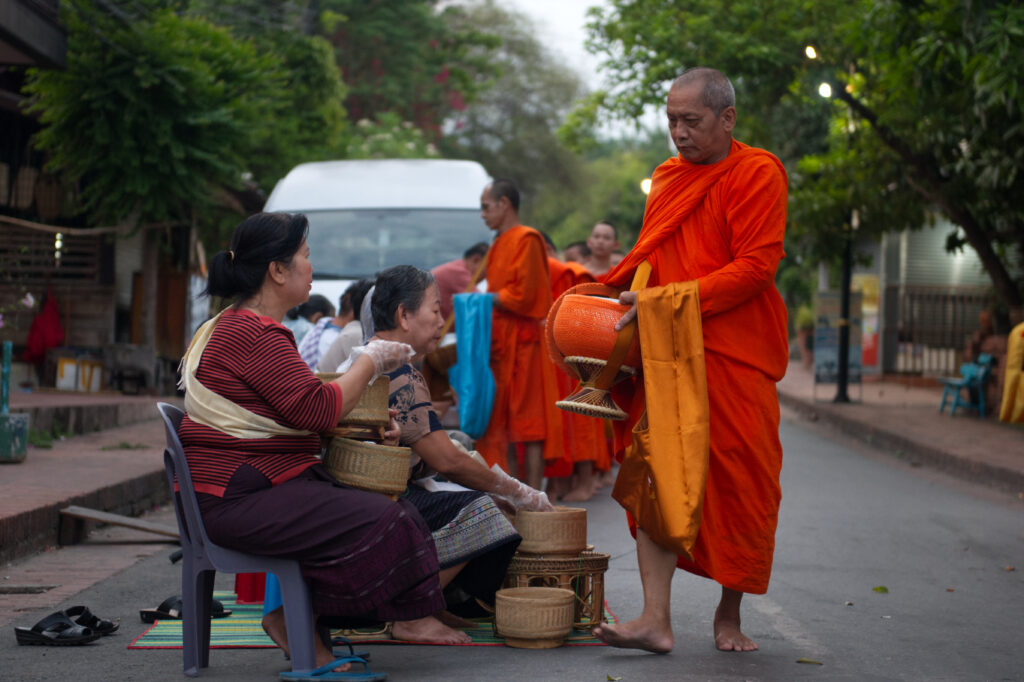
My first stop in Laos: Luang Prabang, a sleepy riverside town nestled between the Mekong and Nam Khan rivers. Once the royal capital, it served as both the political and spiritual heart of the country. Each morning at sunrise, long lines of monks in saffron robes silently collect alms from locals, a daily ritual that speaks to the town’s deep-rooted Buddhist traditions. Today, Luang Prabang is known not only for its spiritual heritage but also for its distinctive mix of traditional Lao wooden homes and crumbling French colonial architecture, enduring reminders of its layered past.
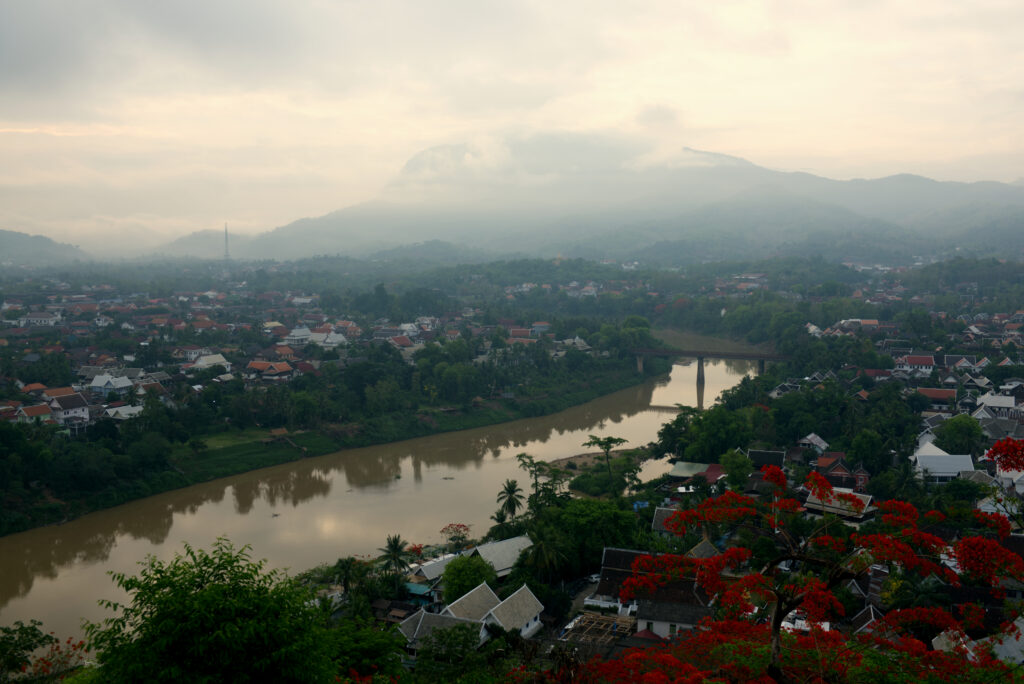
This morning I hiked Phousi Hill, a small but steep hill in the center of Luang Prabang that offers sweeping views of the town, the Mekong and Nam Khan rivers, and the surrounding mountains. It’s a popular spot for both sunrise and sunset. I’d heard that sunset draws much larger crowds, while sunrise, though requiring a pre-6 a.m. wake-up, is far quieter. Since I’m a morning person, I decided to give sunrise a try. I didn’t get up quite as early as I hoped, but the skies were gently overcast and the views were still amazing.
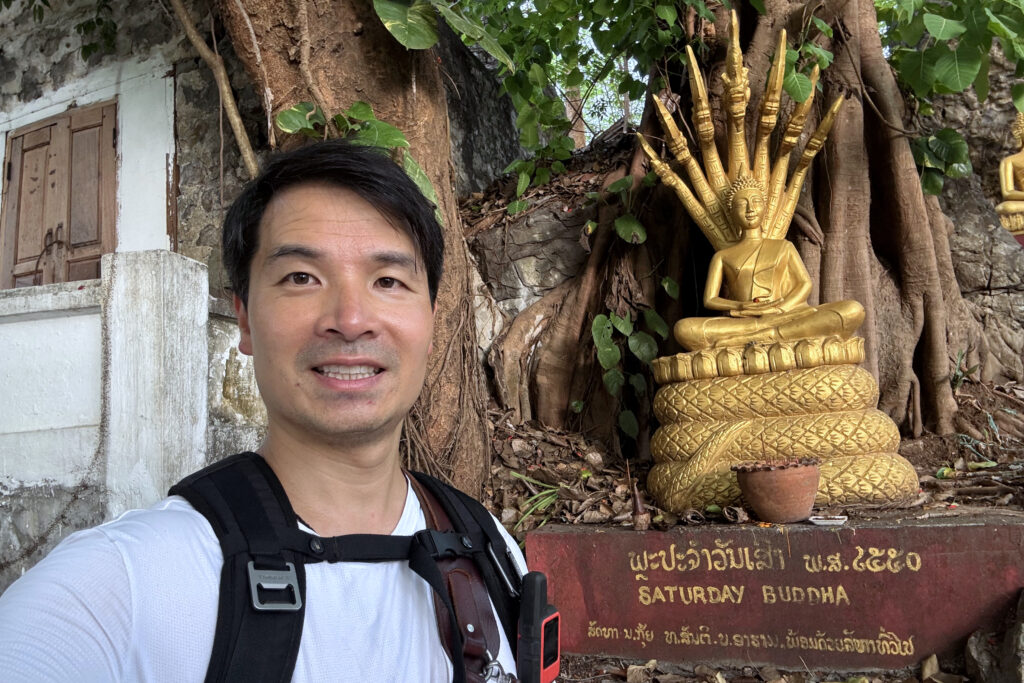
On my way down, I came across a series of small Buddhist statues, each representing a different day of the week. In Thai and Lao tradition, the day you’re born corresponds to a specific Buddha image and posture, which people often pray to for luck or spiritual alignment. I stopped to take a photo in front of Saturday Buddha and also spotted Tuesday Buddha nearby. I looked around for Friday Buddha, my day, so I could pay proper respects, but he was nowhere to be found! Maybe next time.

In the evening, I took a sunset river cruise along the Mekong, the wide, slow-moving stretch that borders Luang Prabang. This section of the river winds past jungle-covered hills, fishing boats, and quiet riverside villages. It’s one of the best ways to take in the region’s natural beauty and get a sense of how deeply the Mekong shapes daily life and movement in northern Laos.
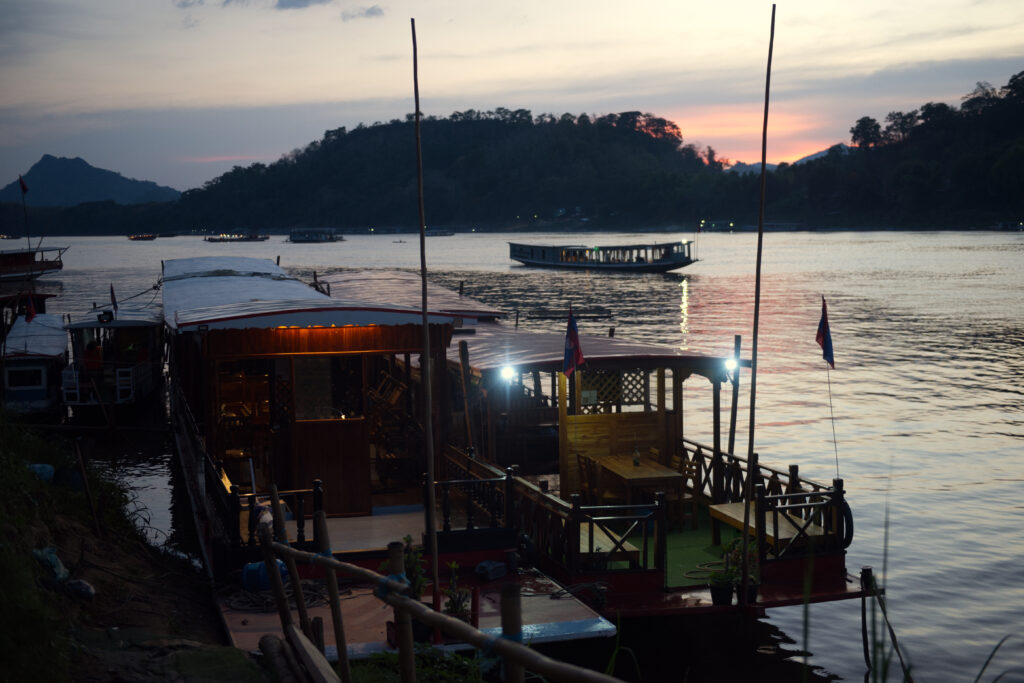
Originally, I had planned to join one of the larger river cruise operators, which offered daily rides for $20 USD. But as I was walking along the river, an independent vendor approached me with a similar cruise, just on a much smaller boat, for only $7. I figured I was here for the views, not the boat size, so I signed on.
The river cruise ended up feeling like two completely different experiences. The first leg, heading upstream, was rough. The heat was intense, and strangely, there wasn’t even a breeze to cut through it. It was pretty miserable. But once we turned around and the sun began to dip behind the mountains, a breeze picked up, and everything changed. The air cooled, the light softened, and suddenly it was a pleasure to be outside again.
What surprised me most was how clean the water looked, especially compared to the Mekong Delta in southern Vietnam, where plastic and trash often choke the banks. Sadly, I suspect that as the river continues downstream through Laos, Cambodia, and into Vietnam, it gathers more waste before eventually emptying it all into the ocean. At least here, it still feels relatively unspoiled.

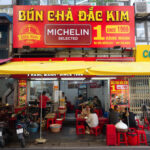
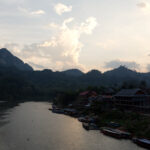

Comments are closed.